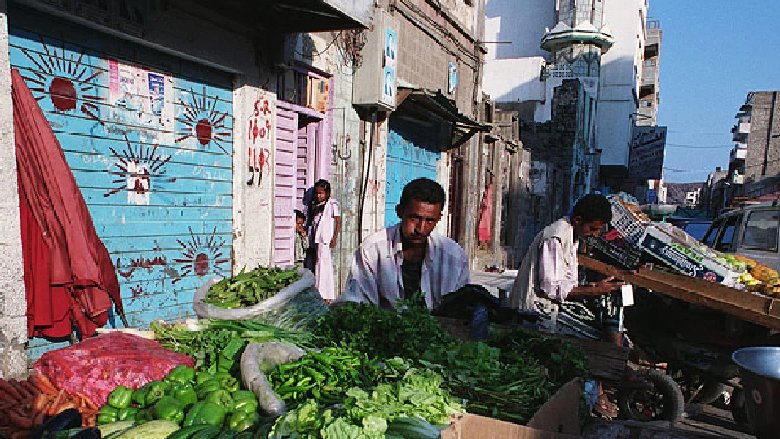The first issue of the Yemen Economic Monitor (YEM) was launched on June 13th, 2022. The YEM is expected to be a regular publication prepared by the Macroeconomics, Trade and Investment (MTI) Global Practice of the Middle East and North Africa (MENA) Region. The Yemen Economic Monitors (YEMs) will consist of two chapters: the first one provides an update on recent economic developments and an outlook assessment, and the second chapter focuses on a special topic of relevance to the country's economic development. The YEMs are part of the World Bank's agenda to devote particular attention to Fragile Conflict, and Violence contexts (FCV), where poverty is rapidly growing, and hard-won development gains are retreating fast.
After seven devastating years of war, Yemen faces a profound economic crisis, threatening the government's ability to sustain vital public services. Yemen's economic output drastically declined in 2020, reflecting the compounded effects of the COVID19 pandemic on pre-existing factors of fragility. Annual GDP is projected to have declined by a further 2 percent in 2021, thus roughly falling to half its pre-conflict level. In addition to endemic violence and insecurity, multiple domestic and external shocks are driving these contractions, including weather events, the economic repercussions of the COVID-19 pandemic, and the war in Ukraine, among others. In this context, extensive damage to vital infrastructure has severely disrupted essential services, and the conflict has disrupted the payment of civil-service salaries, undermining efforts to safeguard human capital and prevent the further deterioration of human development outcomes.
Soaring food prices, further exacerbated by the war in Ukraine, have had a major impact on Yemen's economy and – dramatically – on an already dire food crisis. Over the last year, inflation was pushed by a combination of soaring global commodity prices, currency depreciation, and extraordinary shocks such as the war in Ukraine. As a net food importer, rising global commodity prices have been adversely affecting Yemen’s external balances, inflation, and international reserves levels. Recently, the war in Ukraine has led to an additional spike in the price of critical imports, such as wheat: the country's second-largest imported good after fuel (almost half of all Yemen's wheat imports come from Russia and Ukraine). On the domestic front, over the past year alone, currency depreciation contributed to a 20-30 percent increase in domestic food prices, and shocks to the global grain market could strain the budgets of humanitarian importers. Most dramatically, these dynamics have exacerbated an already dire food crisis.
As the conflict has dragged on, the Yemeni economy has developed more and more into a de facto dual economy, split between the IRG-controlled and DFA-controlled areas. With revenues falling far short of expenditure needs, in 2021, the IRG continued to monetize its fiscal deficit, eroding the purchasing power of the Yemeni rial. In 2021, high inflation caused public spending to contract in real terms even as it expanded in nominal terms. However, recent developments have bolstered the credibility of IRG monetary policy. The introduction of a foreign-exchange auction mechanism at the central bank in mid-November 2021, combined with the appointment of new central-bank management in December 2021, helped stabilize the exchange rate, which closed the year at YER 952 per US dollar, after peaking at roughly YER 1,725 per US dollar only a few days earlier, during the same month (on December 2nd). Meanwhile, de facto authorities (DFA) in Sanaa manage fiscal policy strictly on a cash basis, which has helped contain inflation in DFA-controlled areas, although still in the double digits.
Since April 2022, a number of critical developments increased the hope that a peace-building process may be within reach. Governmental reorganization, together with the announced USD3 billion financing package by KSA and UAE, along with the anticipated SDR conversion, and – importantly – various efforts to identify avenues for dialogue at the political level, are positive signs of hope for a peaceful and secure Yemen, which is a key requisite to strengthen Yemen’s economic outcomes. At the same time, some of these important one-off windfalls will not eliminate the need for structural measures to address some of the economy’s deep-seated imbalances. Key among them is to address the monetary and fiscal policy changes that can help stabilize the exchange rate and inflation, boost revenues, and generate foreign exchange currency to address external imbalances. Keeping trade open, by removing restrictions to the movement of goods and people, and fostering a favorable business environment, will be critical to improving economic performance. Also, coordination and complementarity should guide the work of the international community in enabling Yemen to reap a peace dividend, by leveraging the respective comparative advantages of diverse organizations to achieve our shared goals.
While a modest rebound in the GDP growth rate is expected in 2022, Yemen's economic prospects heavily depend on the evolution of the conflict and overall security conditions on the ground. On the downside, episodes of hostilities coupled with persistently high import prices could further undermine conditions for the private sector. On the upside, the aforementioned renewed hopes for peace, together with rising remittances, and the potential for increased hydrocarbon exports, could accelerate growth over the medium term.
This report focuses on the events up until April 10, 2022 and acknowledges the rapid evolution of significant developments in the following weeks of May-June 2022. The medium-term outlook remains highly uncertain, and the most recent developments will be the subject of and will be discussed in more depth in the next issue of the Yemen Economic Monitor.
